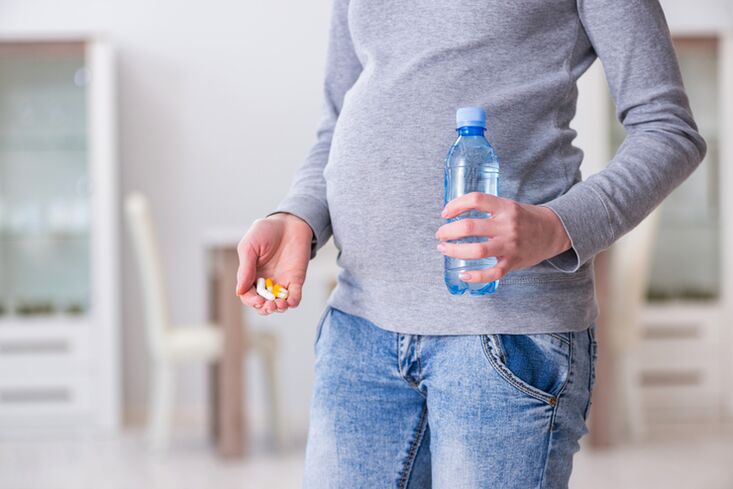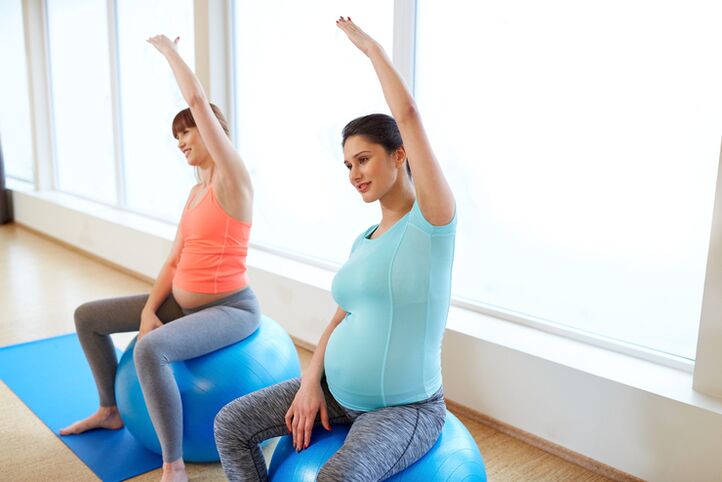
Varicocele veins in the small pelvis of women are characterized by their increased diameter and irritation.In most cases, this condition is associated with damaged venous valves.Despite the high prevalence, the disease is rarely diagnosed.
This is due to a variety of symptoms, and the main symptom is always pain syndrome.It is a characteristic of gynecology, nervous system, gastrointestinal pathology.Sometimes VRVMT is masqueraded as a specific musculoskeletal system disease, under chicken syndrome and arthritis of the hip joint.
Description and Cause
Extended veins in the pelvis are not always visualized because they are usually located deep in the skin.This is one of the reasons for the complexity of diagnosis.With VRVMT, the elasticity and tone of the veins decrease, blood circulation worsens and begins to stagnate.Due to veins blockage and bloating, the blood flows out is caused.
The BRVMT mechanism is based on the failure of the ovarian vein, which is why blood flow back and reflux.This leads to an increase in venous pressure and blood stasis, as well as the formation of other blood circulation circles-branches.
The most important starting factor is dysplasia - underdevelopment of connective tissue, which is approximately one-third of the population.Dyplasia is a congenital defect in which the collagen level required for blood vessel strength is reduced.
During the postmenopausal period, the severity of varicose veins is reduced, suggesting favorable theory of the effects of hormones on venous state.
The tone that significantly weakens the intravenous system is able to have progesterone - a female sex hormone, also known as "pregnancy hormone."On the one hand, it reduces uterine tension, thereby preventing miscarriage, and on the other hand, it weakens the walls of blood vessels and causes them to swell.The growth of the uterus exacerbates this condition, which increases the pressure on the large veins and causes the formation of blood flow bypass pathways, collaterals.This is why VRVMT is very common during pregnancy.
Factors that increase the risk of varicose veins include the following:
- Too high or vice versa insufficient physical exercise;
- Various;
- multiple or complex births;
- Gynecological diseases - endometriosis, fibroids, etc.;
- Long-term intake of steroid hormones, including birth control pills.
Types and Degrees

There are two types of varicose veins in the pelvis.The first type is called varicose veins of vulva and vaginal lines, and the second type is a syndrome of porous pelvic veins.Both types can develop in isolation or combine with each other, which most often occurs.Pregnant women mainly face damage to the vulvar vein, which is more than 91% of cases after delivery.
VRVMT is also classified by origin and localization.According to the origin, varicose veins are divided into primary and secondary.Due to insufficient venous valves, major varicose veins can occur.Pregnancy is the trigger.Secondary varicose veins are caused by systemic diseases.
According to the location of VRVMT, when all veins in the pelvis are affected, the total is total and partially affects one or more veins.According to the diameter of the vein, the severity of 3 degrees is distinguished:
- 1 tablespoon.- Up to ½ cm;
- 2 tablespoons.-0.6-1 cm;
- 3 tablespoons.- More than 1 cm.
symptom
Symptoms of varicose veins include:
- an outburst and heavy pain in the lower abdomen;
- Increased emissions;
- Various urination violations;
- The pregnancy has already gained weight rapidly.
Usually, soreness increases after intercourse, hypothermia, and long steps or standing.Due to damage to the surface veins, veins and blue-red vascular mesh may appear on the genitals and on the top of the hips.
Usually, the signs of varicose veins are similar to cystitis: a small part of urination is severe.
There may be near the end of pregnancy, burning and swelling may occur in the genitals.Similar symptoms require special attention, as vein inflammation or rupture that may cause severe bleeding is not ruled out.
What is Dangerous VRVMT
Varicose veins can cause several complications, making life threatening.First, it is thrombophlebitis or thromboembolic - dilated vein inflammation that causes blood clots.If a blood clot - blood clot - blocks the blood vessels, the blood supply to the placenta is blocked.The consequence of obstruction will be fetal failure and fetal hypoxia.
Another serious complication is the threat of miscarriage and premature birth due to the risk of blood circulation violations.
Due to enlargement of the vein, doctors can naturally ban labor to minimize the risk of vein rupture, threatening internal or uterine bleeding.
treat

In pregnant women, medication therapy is limited to taking intravenous treatment and anti-bile killer medications.Funds for nonsteroid anti-inflammatory (NSAID) are allowed for obvious pain.If there is a threat to children's oxygen starvation, treatment is performed in the hospital using antioxidant formulations.
Starting from month 4, you can perform a phlebosklerizing procedure, during which the dose is introduced into the affected vein.The effectiveness of the process is evaluated after 7 days and will be repeated if necessary.Compressed linen must be worn throughout the week after the surgery.You can implement venous attribution in one session, but more you have to perform 3-4 surgical procedures.
Persistent pain syndrome and advanced venous diameters above 1 cm are indications of surgical intervention.It can only be performed with mild laser or radio wave condensation methods during the first two or three months of pregnancy.If VRVMT is caused by uterine flips, plastic surgery is performed on the uterine ligament.
Doctors recommend more pregnant women with small pelvis diagnosed as varicose veins and exercise to prevent pelvic blood from stagnating.Wearing compression bandages and eating will help reduce the progress of VRVMT.
The menu should be made in a manner that mainly contains plant foods as well as fermented milk products and sufficient amounts of cereals.
Good results will lead to increased contrast or perineal shower.During the operation, a woman sat in a special seat, provided water from below in the form of a ring, and directed it to the pants co.The duration of the process is 3-5 minutes, and the treatment process consists of 15 to 20 courses.
Preventing the development and progress of varicose veins is mainly reduced to optimizing exercise activities and nutrition.Most importantly, excluding long-term static and dynamic loads and adjusting diets, bringing more fruits and vegetables into the diet.In the initial stages of varicose veins, exercise therapy and respiratory gymnastics, compressed products wearing knitted clothing.


















